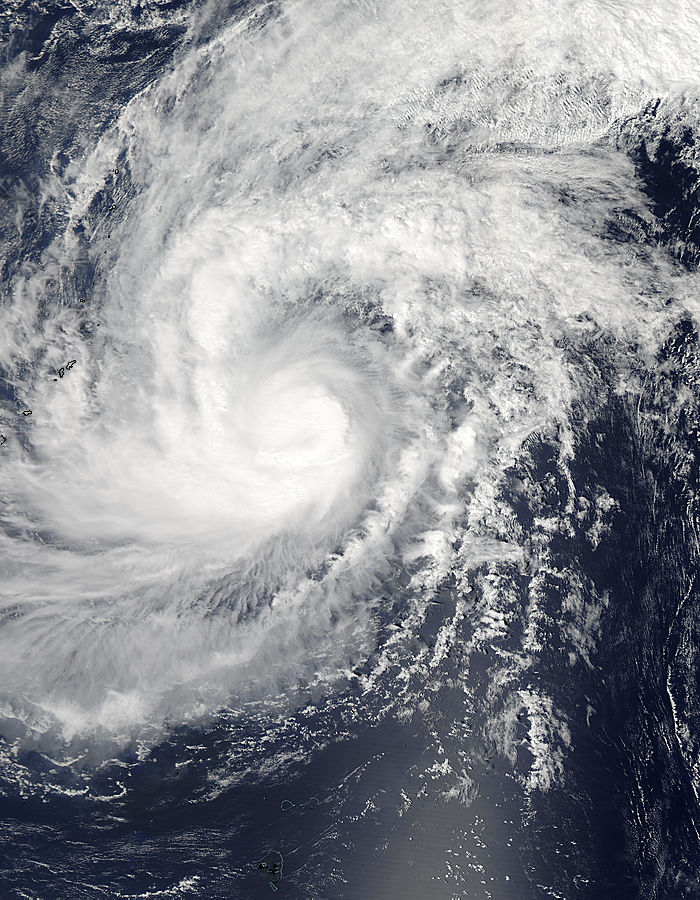NASA Satellite Sees Faxai Hit Typhoon Strength

The MODIS instrument aboard NASA's Aqua satellite captured this image of Typhoon Faxai in the North Pacific Ocean on March 4 at 03:05 UTC. Image Credit: NASA Goddard MODIS Rapid Response Team
On March 4 at 1500 UTC/10 a.m. EST, Tropical cyclone Faxai reached typhoon strength with maximum sustained winds near 65 knots/74.8 mph/120.4 kph.
It was centered near 18.2 north and 151.6 east, about 429 nautical miles east-northeast of Andersen Air Force Base, Guam. Faxai was moving to the north-northeast at 16 knots/18.4 mph/29.6 kph.
On March 4 at 03:05 UTC, the Moderate Resolution Imaging Spectroradiometer or MODIS instrument aboard NASA's Aqua satellite captured an image of Typhoon Faxai in the North Pacific Ocean.
The MODIS image showed tightly wrapped bands of thunderstorms around the center of circulation.
Forecasters at the Joint Typhoon Warning Center or JTWC noted that animated infrared satellite imagery revealed an 8 nautical-mile-wide (9.2 mile/14.8 km) eye feature has developed while the system has become more compact and symmetric.
Thunderstorms around the edge of the system, however, appeared to be weakening.
The JTWC expects Faxai to maintain typhoon strength for a day before weakening.
Text credit: Rob Gutro
NASA's Goddard Space Flight Center
Media Contact
All latest news from the category: Earth Sciences
Earth Sciences (also referred to as Geosciences), which deals with basic issues surrounding our planet, plays a vital role in the area of energy and raw materials supply.
Earth Sciences comprises subjects such as geology, geography, geological informatics, paleontology, mineralogy, petrography, crystallography, geophysics, geodesy, glaciology, cartography, photogrammetry, meteorology and seismology, early-warning systems, earthquake research and polar research.
Newest articles

High-energy-density aqueous battery based on halogen multi-electron transfer
Traditional non-aqueous lithium-ion batteries have a high energy density, but their safety is compromised due to the flammable organic electrolytes they utilize. Aqueous batteries use water as the solvent for…

First-ever combined heart pump and pig kidney transplant
…gives new hope to patient with terminal illness. Surgeons at NYU Langone Health performed the first-ever combined mechanical heart pump and gene-edited pig kidney transplant surgery in a 54-year-old woman…

Biophysics: Testing how well biomarkers work
LMU researchers have developed a method to determine how reliably target proteins can be labeled using super-resolution fluorescence microscopy. Modern microscopy techniques make it possible to examine the inner workings…





















